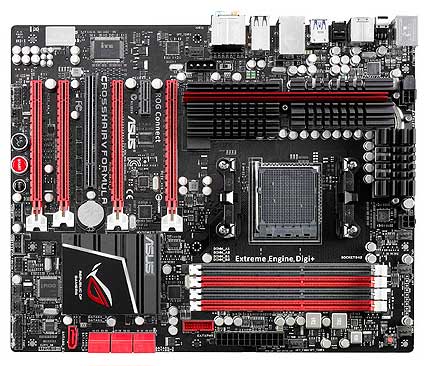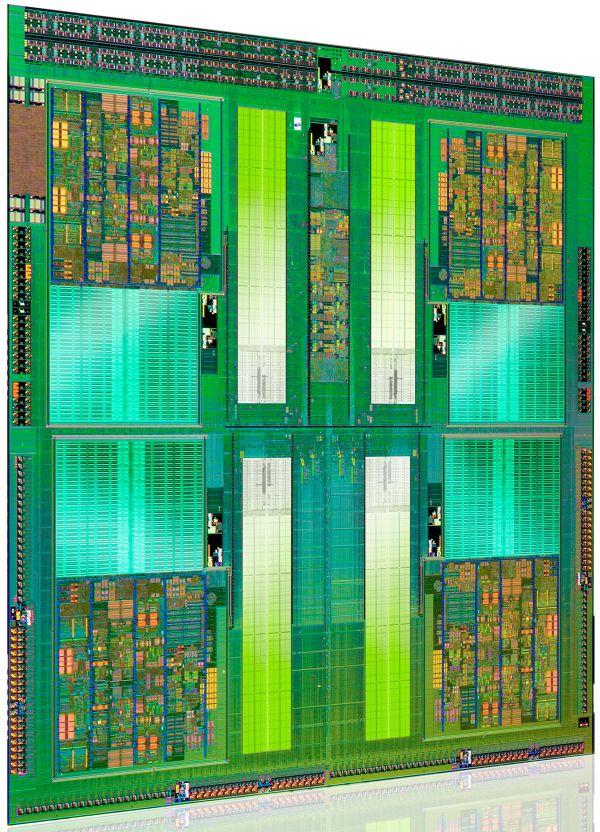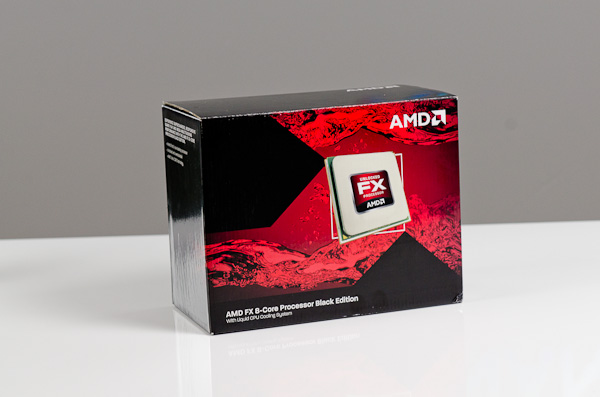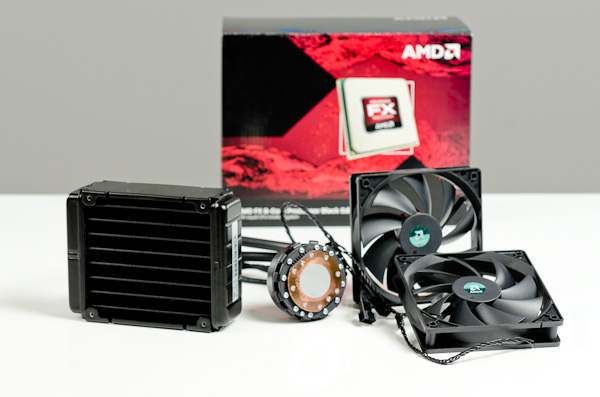The Bulldozer Review: AMD FX-8150 Tested
by Anand Lal Shimpi on October 12, 2011 1:27 AM ESTAMD has been trailing Intel in the x86 performance space for years now. Ever since the introduction of the first Core 2 processors in 2006, AMD hasn't been able to recover and return to the heyday of the Athlon 64 and Athlon 64 X2. Instead the company has remained relevant by driving costs down and competing largely in the sub-$200 microprocessor space. AMD's ability to hold on was largely due to its more-cores-for-less strategy. Thanks to aggressive pricing on its triple and hexa-core parts, for users who needed tons of cores, AMD has been delivering a lot of value over the past couple of years.
Recently however Intel has been able to drive its per-core performance up with Sandy Bridge, where it's becoming increasingly difficult to recommend AMD alternatives with higher core counts. The heavily threaded desktop niche is tough to sell to, particularly when you force users to take a significant hit on single threaded performance in order to achieve value there. For a while now AMD has needed a brand new architecture, something that could lead to dominance in heavily threaded workloads while addressing its deficiencies in lightly threaded consumer workloads. After much waiting, we get that new architecture today. Bulldozer is here.
It's branded the AMD FX processor and it's only available in a single die configuration. Measuring 315mm2 and weighing in at around 2 billion transistors (that's nearly GPU-sized fellas), Bulldozer isn't that much smaller than existing 45nm 6-core Phenom II designs despite being built on Global Foundries' 32nm SOI process. Both die area and transistor count are up significantly over Sandy Bridge, which on Intel's 32nm HKMG process is only 995M transistors with a die size of 216mm2. This is one big chip.
| CPU Specification Comparison | ||||||||
| CPU | Manufacturing Process | Cores | Transistor Count | Die Size | ||||
| AMD Bulldozer 8C | 32nm | 8 | 1.2B* | 315mm2 | ||||
| AMD Thuban 6C | 45nm | 6 | 904M | 346mm2 | ||||
| AMD Deneb 4C | 45nm | 4 | 758M | 258mm2 | ||||
| Intel Gulftown 6C | 32nm | 6 | 1.17B | 240mm2 | ||||
| Intel Nehalem/Bloomfield 4C | 45nm | 4 | 731M | 263mm2 | ||||
| Intel Sandy Bridge 4C | 32nm | 4 | 995M | 216mm2 | ||||
| Intel Lynnfield 4C | 45nm | 4 | 774M | 296mm2 | ||||
| Intel Clarkdale 2C | 32nm | 2 | 384M | 81mm2 | ||||
| Intel Sandy Bridge 2C (GT1) | 32nm | 2 | 504M | 131mm2 | ||||
| Intel Sandy Bridge 2C (GT2) | 32nm | 2 | 624M | 149mm2 | ||||
Update: AMD originally told us Bulldozer was a 2B transistor chip. It has since told us that the 8C Bulldozer is actually 1.2B transistors. The die size is still accurate at 315mm2.
Architecturally Bulldozer is a significant departure from anything we've ever seen before. We'll go into greater detail later on in this piece, but the building block in AMD's latest architecture is the Bulldozer module. Each module features two integer cores and a shared floating point core. FP hardware is larger and used less frequently in desktop (and server workloads), so AMD decided to share it between every two cores rather than offer a 1:1 ratio between int/fp cores on Bulldozer. AMD advertises Bulldozer based FX parts based on the number of integer cores. Thus a two module Bulldozer CPU, has four integer cores (and 2 FP cores) and is thus sold as a quad-core CPU. A four module Bulldozer part with eight integer cores is called an eight-core CPU. There are obvious implications from a performance standpoint, but we'll get to those shortly.
The FX Lineup
There are a total of 7 AMD FX CPUs that AMD is announcing today, although only four are slated for near-term availability.
| CPU Specification Comparison | |||||||||
| Processor | Cores | Clock Speed | Max Turbo | NB Clock | L2 Cache | TDP | Price | ||
| AMD FX-8150 | 8 | 3.6GHz | 4.2GHz | 2.2GHz | 8MB | 125W | $245 | ||
| AMD FX-8120 | 8 | 3.1GHz | 4.0GHz | 2.2GHz | 8MB | 95W/125W | $205 | ||
| AMD FX-8100* | 8 | 2.8GHz | 3.7GHz | 2GHz | 8MB | 95W | N/A | ||
| AMD FX-6100 | 6 | 3.3GHz | 3.9GHz | 2GHz | 6MB | 95W | $165 | ||
| AMD FX-4170* | 4 | 4.2GHz | 4.3GHz | 2.2GHz | 4MB | 125W | N/A | ||
| AMD FX-B4150* | 4 | 3.8GHz | 4GHz | 2.2GHz | 4MB | 95W | N/A | ||
| AMD FX-4100 | 4 | 3.6GHz | 3.8GHz | 2GHz | 4MB | 95W | $115 | ||
| AMD Phenom II X6 1100T | 6 | 3.2GHz | 3.6GHz | 2GHz | 3MB | 125W | $190 | ||
| AMD Phenom II X4 980 | 4 | 3.7GHz | N/A | 2GHz | 2MB | 125W | $170 | ||
The FX-8150, 8120, 6100 and 4100 are what's launching today. The first digit in AMD's FX model numbers indicates the number of cores with the 8150 and 8120 boasting eight, while the 6100 only has six active integer cores (three Bulldozer modules). The FX-4100 features four integer cores. L2 cache scales with core count (2MB per module), while the L3 cache size remains fixed at 8MB regardless of SKU.
North Bridge and L3 cache frequency alternate between 2.0GHz and 2.2GHz depending on the part. TDPs range between 95W and 125W as well, with the FX-8120 being offered in both 125W and 95W versions.
There's only a single Bulldozer die. The 6 and 4 core versions simply feature cores disabled on the die. AMD insists this time around, core unlocking won't be possible on these harvested parts.
The huge gap in clock speed between the 8120 and 8150 are troubling. Typically we see linear frequency graduations but the fact that there's a 16% difference between these two SKUs seems to point to process problems limiting yield at higher frequencies—at least for the 8-core version.
Outside of the quad-core and hex-core Bulldozer pats, the only other FX processor able to exceed the 3.3GHz clock speed of the Phenom II X6 1100T is the 8150. And if you include quad-core Phenom II parts in the mix, only two Bulldozer parts ship at a higher stock frequency than the Phenom II X4 980. Granted Turbo Core will help push frequencies even higher, but these low base frequencies are troubling. For an architecture that was designed to scale to clock speeds 30% higher than its predecessor, Bulldozer doesn't seem to be coming anywhere close.
The entire FX lineup ships unlocked, which allows for some easy overclocking as you'll see soon enough.
Motherboard Compatibility
AMD is certifying its FX processors for use on Socket-AM3+ motherboards. Owners of standard AM3 motherboards may be out of luck, although motherboard manufacturers can choose to certify their boards for use with Bulldozer if they wish to do so. From AMD's perspective however, only AM3+ motherboards with BIOS/UEFI support for Bulldozer are officially supported.
All existing AM2/AM2+/AM3/AM3+ heatsinks should work with the FX processor; they simply need to be rated for the TDP of the processor you're looking to cool.

For this review, AMD supplied us with ASUS' Crosshair V Formula AM3+ motherboard based on AMD's 990FX chipset.
AMD does offer six 6Gbps SATA ports on its 990FX chipset, a significant upgrade from the two 6Gbps ports on Intel's 6-series chipsets. Unbuffered ECC memory is also supported for those who desire the added security, once again a feature not supported on Intel's consumer grade 6-series chipsets.
Despite AMD's trend towards releasing APUs with integrated GPUs (thus requiring a new socket), AMD insists that the AM3+ platform will live to see one more processor generation before it's retired.
AMD's Liquid CPU Cooling System
Alongside its new FX processors AMD is introducing its first branded liquid cooling system manufactured by Asetek.
AMD's cooling system is similar to other offerings from companies like Antec and Corsair. The system is self contained, you never have to worry about adding any more liquid to it.
Attach the cooling module to your CPU socket via a simple bracket, and affix the radiator to your case and you're good to go. The radiator is cooled via two 120mm fans, also included in the box.
AMD doesn't have an exact idea on pricing or availability of its liquid cooling solution, but I'm told to expect it to be around $100 once available. My sample actually arrived less than 12 hours ago, so expect a follow up with performance analysis later this week.
The Roadmap
For the first time in far too long, AMD is actually being very forthcoming about its future plans. At a recent tech day about Bulldozer, AMD laid out its CPU core roadmap through 2014. The code names are below:
Piledriver you already know about, it's at the heart of Trinity, which is the 2—4 core APU due out in early 2012. Piledriver will increase CPU core performance by around 10—15% over Bulldozer, although it will initially appear in a lower performance segment. Remember that final generation of AM3+ CPU I mentioned earlier? I fully expect that to be a GPU-less Piledriver CPU due out sometime in 2012.
Steamroller will follow in 2013, again improving performance (at the core level) by around 10—15%. Excavator will do the same in 2014. AMD believes that these performance increases will be sufficient to keep up with Intel over time, however I'll let you be the judge of that once we get to the Bulldozer performance numbers.
The other thing to note about AMD's roadmap is it effectively puts the x86 business on an annual cadence, in line with what we've seen from the AMD GPU folks. Although AMD isn't talking about what process nodes to expect all of these cores at, it looks like AMD will finally have an answer to Intel's tick-tock release schedule moving forward.























430 Comments
View All Comments
THizzle7XU - Wednesday, October 12, 2011 - link
Well, why would you target the variable PC segment when you can program for a well established, large user-base platform with a single configuration and make a ton more money with probably far less QA work since there's only one set (two for multi-platform PS3 games) of hardware to test?And it's not like 360/PS3 games suddenly look like crap 5-6 years into their cycles. Think about how good PS2 games looked 7 years into that system's life cycle (God of War 2). Devs are just now getting the most of of the hardware. It's a great time to be playing games on 360/PS3 (and PC!).
GatorLord - Wednesday, October 12, 2011 - link
Consider what AMD is and what AMD isn't and where computing is headed and this chip is really beginning to make sense. While these benches seem frustrating to those of us on a desktop today I think a slightly deeper dive shows that there is a whole world of hope here...with these chips, not something later.I dug into the deal with Cray and Oak Ridge, and Cray is selling ORNL massively powerful computers (think petaflops) using Bulldozer CPUs controlling Nvidia Tesla GPUs which perform the bulk of the processing. The GPUs do vastly more and faster FPU calculations and the CPU is vastly better at dishing out the grunt work and processing the results for use by humans or software or other hardware. This is the future of High Performance Computing, today, but on a government scale. OK, so what? I'm a client user.
Here's what: AMD is actually best at making GPUs...no question. They have been in the GPGPU space as long as Nvidia...except the AMD engineers can collaborate on both CPU and GPU projects simultaneously without a bunch of awkward NDAs and antitrust BS getting in the way. That means that while they obviously can turn humble server chips into supercomputers by harnessing the many cores on a graphics card, how much more than we've seen is possible on our lowly desktops when this rebranded server chip enslaves the Ferraris on the PCI bus next door...the GPUs.
I get it...it makes perfect sense now. Don't waste real estate on FPU dies when the one's next door are hundreds or thousands of times better and faster too. This is not the beginning of the end of AMD, but the end of the beginning (to shamlessely quote Churchill). Now all that cryptic talk about a supercomputer in your tablet makes sense...think Llano with a so-so CPU and a big GPU on the same die with some code tweaks to schedule the GPU as a massive FPU and the picture starts taking shape.
Now imagine a full blown server chip (BD) harnessing full blown GPUs...Radeon 6XXX or 7XXX and we are talking about performance improvements in the orders of magnitude, not percentage points. Is AMD crazy? I'm thinking crazy like a fox.
Oh..as a disclaimer, while I'm long AMD...I'm just an enthusiast like the rest of you and not a shill...I want both companies to make fast chips that I can use to do Monte Carlos and linear regressions...it just looks like AMD seems to have figured out how to play the hand they're holding for change...here's to the future for us all.
Menoetios - Wednesday, October 12, 2011 - link
I think you bring up a very good point here. This chip looks like it's designed to be very closely paired with a highly programmable GPU, which is where the GPU roadmaps are leading over the next year and a half. While the apples-to-apples nature of this review draw a disappointing picture, I'm very curious how AMD's "Fusion" products next year will look, as the various compute elements of the CPU and GPU become more tightly integrated. Bulldozer appears to fit perfectly in an ecosystem that we don't quite have yet.GatorLord - Wednesday, October 12, 2011 - link
Exactly. Ecosystem...I like it. This is what it must feel like to pick up a flashlight at the entrance to the tunnel when all you're used to is clubs and torches. Until you find the switch, it just seems worse at either...then viola!actionjksn - Wednesday, October 12, 2011 - link
Wow I hope that made you feel better about the crappy chip also known a "Man With A Shovel"I was just hoping AMD would quit forcing Intel to have to keep on crippling their chips, just to keep them from putting AMD out of business. AMD better fix this abortion quick, this is getting old.
GatorLord - Thursday, October 13, 2011 - link
Feeling fine. Not as good in the short run, but feeling better about the long run. Unfortunately, due to constraints, it takes AMD too long to get stuff dialed in and by the time they do, Intel has already made an end run and beat them to the punch.Intel can do that, they're 40x as big as AMD. Actually, and this may sound crazy until you digest it, the smartest thing Intel could do is spin off a couple of really good dev labs as competitors. Relying on AMD to drive your competition is risky in that AMD may not be able to innovate fast enough to push Intel where it could be if they had more and better sharks in the water nipping at their tails.
You really need eight or more highly capable, highly aggressive competitors to create a fully functioning market free of monopolistic and oligopolistic sluggishness and BS hand signalling between them. This space is too capital intensive for that at the time being with the current chip making technology what it is.
yankeeDDL - Wednesday, October 12, 2011 - link
Just to be the devil's advocate ...The launch event in London sported 2 PC, side by side, running Cinebench.
One had the core i5-2500k, the other the FX8150.
Of course, these systems are prepared by AMD, so the results from Anand are clearly more reliable (at least all the conditions are documented).
Nevertheless, it is clear that in the demo from AMD, the FX runs faster. Not by a lot, but it is clearly faster than the i5.
Video: http://www.viddler.com/explore/engadget/videos/335...
Even so, assuming that this was a valid datapoint, things won't change too much: the i5-2500k is cheaper and (would be) slightly slower than the FX8150 in the most heavily threaded benchmark. But it would be slightly better than Anand's results show.
KamikaZeeFu - Wednesday, October 12, 2011 - link
"Nevertheless, it is clear that in the demo from AMD, the FX runs faster. Not by a lot, but it is clearly faster than the i5."Check the review, cinebench r11.5 multithreaded chart.
Anand's numbers mirror the ones by AMD. Multithreaded workloads are the only case where the 8150 will outperform an i5 2500k because it can process twice the amount of threads.
Really disappointed in AMD here, but I expected subpar performance because it was eerily quiet about the FX line as far as performance went.
Desktop BD is a full failure, they were aiming for high clock speeds and made sacrifices, but still failed their objective. By the time their process is mature and 4 GHz dozers hit the channel, Ivy bridge will be out.
As far as server performance goes, not even sure they will succeed there.
As seen in the review, clock for clock performance isn't up compared to the prvious generation, and in some cases it's actually slower. Considering that servers run at lower clocks in the first place, I don't see BD being any threat to intels server lineup.
4 years to develop this chip, and their motto seemed to be "we'll do netburst but in not-fail"
medi01 - Wednesday, October 12, 2011 - link
So CPU is a bottleneck in your games eh?TekDemon - Wednesday, October 12, 2011 - link
It's not but people don't buy CPUs for today's games, generally you want your system to be future proof so the more extra headroom there is in these CPU benchmarks the better it holds up over the long term. Look back at CPU benchmarks from 3-4 years ago and you'll see that the CPUs that barely passed muster back then easily bottleneck you whereas CPUs that had extra headroom are still usable for gaming. For example the Core 2 Duo E8400 or E8500 is still a very capable gaming CPU, especially when given a mild overclock and frankly in games that only use a few threads (like Starcraft 2) it gives Bulldozer a run for the money.I'm not a fanboy either way since I own that E8400 as well as a Phenom II (unlocked to X4, OC'ed to 3.9Ghz) and a i5 2500K but if I was building a new system I sure as heck would want extra headroom for future-proofing.
That said? Of course these chips will be more than enough power for general use. They're just not going to be good for high end systems. But in a general use situation the problem is that the power consumption is just crappy compared to the intel solutions, even if you can argue that it's more than enough power for most people why would you want to use more electricity?